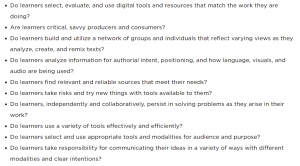I believe that digital literacy is super important in the classroom. While teachers are teaching students how to do proper research and to find trustworthy news outlets, it is important that teachers shows students what that really looks like.
As Damon Brown mention is his “How to choose your news” TEDtalk , There are so many outlets available that it is tough to know what is real news and what is not. While they are so many to choose from, the amount of information can sometimes leave us less informed than before we started reading or listening because it is hard to know what is real and what is fake.
Another TEDtalk by Noah Tavlin called “How false news can spread”, Talks a lot about fake news and branches off of what Brown said in his TEDtalk. The way that fake news floats around is incredible and the internet makes this much more prevalent. With so many contradictory opinions around and people trying to prove their points, it is hard to find the origin of most information, and most elementary students do not have the skills, nor the patience to figure that out. It also brings up the idea of researching articles that prove what we want to prove instead of simply proving the truth, which also causes a lot of issues in society when fake news is so prevalent.
I do try my best when it comes to teaching about digital literacy in my classroom and I often enjoy getting new up to date ressources to use. The New York Times lesson is an interesting one that I believe students would really find engaging. It also shows how easy it is for a news outlet to be convincing and act as a true and trustworthy source. I will definitely look into using this lesson plan in my own class going forward!
The NCTE Framework is a really good resource for educators to learn about what students are learning and why students are learning about digital literacy. I really enjoy that the website almost lays things out like outcomes or “I can statements”

It focuses on how students can work to figure out what sources are good and reliable, while also teaching educators about the different strategies that websites might use to sway readers into believing that their information is true. This is another resource that I will be using when I focus on digital literacy with my students.
